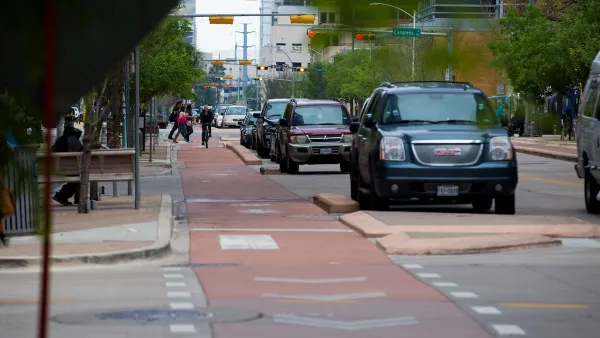The Pacific Northwest is leading the way for bicycle safety at the state level, according to the latest report from the League of American Bicyclists.

The League of American Bicyclists released its annual Bicycle Friendly State rankings at the end of November, commencing with a note on the tragedies that defined 2018: "In 2018, more people were killed while biking than in any year since 1990." That tragedy is followed by a note of hope: "After several years of increasing bicyclist deaths, there is still reason to believe we can be safer: every state is taking some action to make bicycling better. Some, but not enough."
According to the article by Ken McLeod that announces the new rankings, many state departments of transportation are making progress on bicycle safety. As listed in the article:
- Every state has now taken at least one of our five Bicycle Friendly Actions;
- State legislatures are increasingly providing funding for biking and walking improvements and helping state Departments of Transportation ensure that the safety of all users is a core part of their work;
- Eight statewide bike plans [pdf] have been adopted since 2017 and nine are currently in progress; and
- There is more data available than ever on biking and walking, often thanks to federal and state collaboration.
As for the rankings, West Coast states are clearly in the lead, with Washington and Oregon taking the top two spots, respectively. California came in at #4. Minnesota was at #3 and the fifth spot went to Massachusetts.
More insights and the full report can be found in the article. For local coverage of the rankings, see an article by Jonathan Maus on the progress made in Oregon to achieve that state's highest ranking ever.
FULL STORY: NEW BICYCLE FRIENDLY STATE RANKING SHOWS PROGRESS BUT PERILS PERSIST

National Parks Layoffs Will Cause Communities to Lose Billions
Thousands of essential park workers were laid off this week, just before the busy spring break season.

Retro-silient?: America’s First “Eco-burb,” The Woodlands Turns 50
A master-planned community north of Houston offers lessons on green infrastructure and resilient design, but falls short of its founder’s lofty affordability and walkability goals.

Delivering for America Plan Will Downgrade Mail Service in at Least 49.5 Percent of Zip Codes
Republican and Democrat lawmakers criticize the plan for its disproportionate negative impact on rural communities.

Test News Post 1
This is a summary

Test News Headline 46
Test for the image on the front page.

Balancing Bombs and Butterflies: How the National Guard Protects a Rare Species
The National Guard at Fort Indiantown Gap uses GIS technology and land management strategies to balance military training with conservation efforts, ensuring the survival of the rare eastern regal fritillary butterfly.
Urban Design for Planners 1: Software Tools
This six-course series explores essential urban design concepts using open source software and equips planners with the tools they need to participate fully in the urban design process.
Planning for Universal Design
Learn the tools for implementing Universal Design in planning regulations.
EMC Planning Group, Inc.
Planetizen
Planetizen
Mpact (formerly Rail~Volution)
Great Falls Development Authority, Inc.
HUDs Office of Policy Development and Research
NYU Wagner Graduate School of Public Service





























